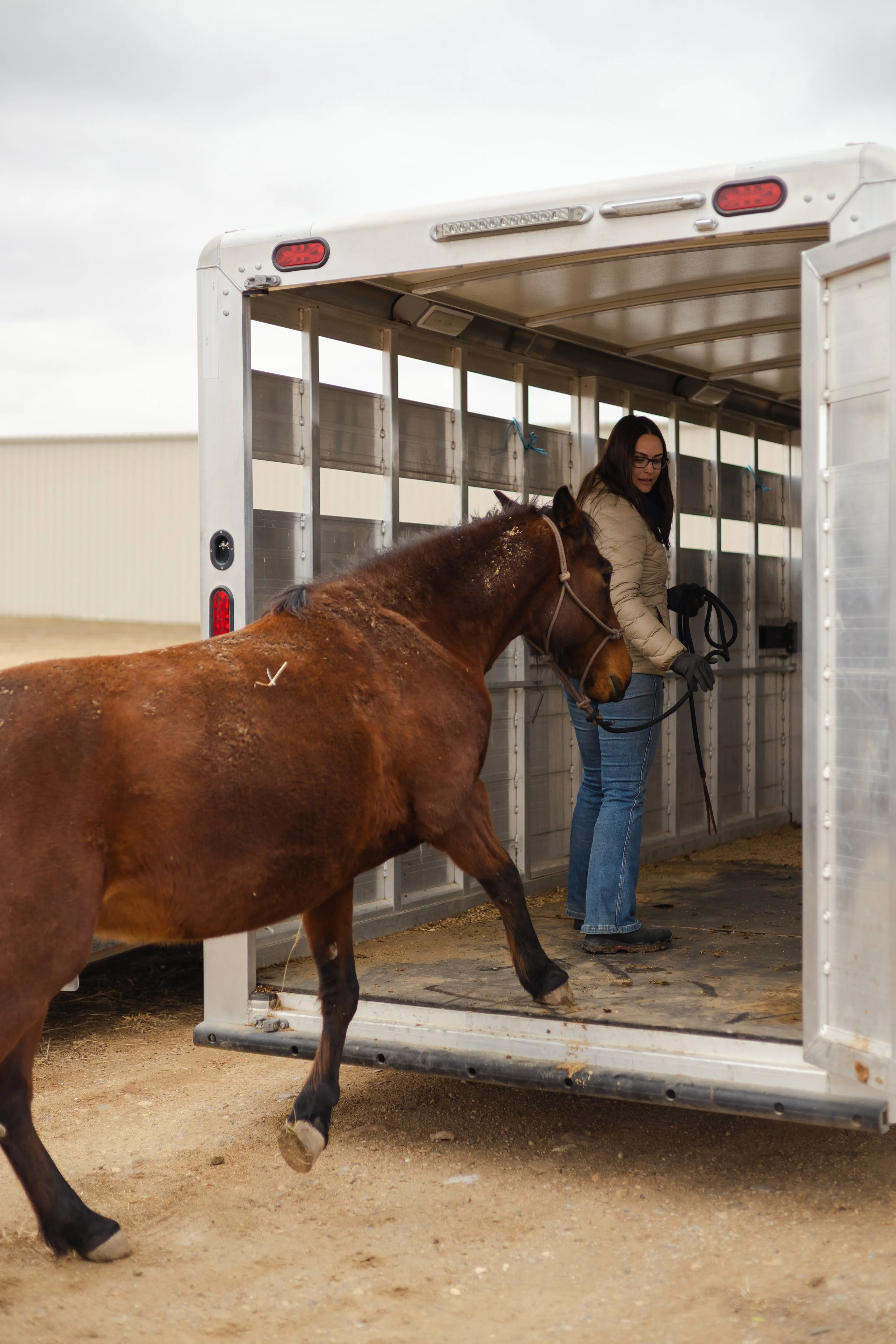Be Prepared
Sign up for evacuation alerts from your local agencies
Practice Loading & Unloading
Horses must be comfortable loading in trailers and unloading in potentially unfamiliar surroundings. The stress of evacuation will only add to any existing loading issues. Train your horses to load and unload. Practice having someone else load your horses, as you may not be there to help. Horses that will not load may have to be left behind. Practice makes evacuation less stressful for everyone!
If you have a truck and trailer
Keep your equipment road-ready by checking the tires, floors, and hitch frequently. Make sure your towing vehicle is in good working order and that the gas tank is at least half-full.
If you don’t have a way to transport
Register your horses on HorseAlert. Plan ahead with friends or facilities that you could evacuate to during a disaster.
Evacuate sooner rather than later
Evacuate early – even before an official evacuation order is issued. Trust your instincts and evacuate early, even before official orders if you sense danger. If you wait until the last minute to evacuate, emergency management officials may instruct you to leave your horses behind. If this happens, your horses could potentially be unattended for days without care, food, or water.
Early evacuation not only keeps your horses safe but also helps emergency responders do their job without any obstacles. Imagine being able to move your horses to safety while keeping the roads clear for those who need them most.
Identification & documentation
Permanent identification, such as a microchip, is the best way to be reunited with your horse if you become separated during a disaster.
Visible identification is also helpful. Humane methods of identification include an ID tag attached to the halter, an engraved or marked plastic neckband or leg band, livestock chalk or paint, tags braided into the mane, and contact information written in marker on the hooves.
Take several full-frame and close-up photographs of each horse, along with detailed descriptions. Record the breed, color, size, markings, scars, cowlicks, whorls, and other notable features. Store digital copies on a cloud server and keep hard copies in a sealed plastic bag in a safe place.
Essential items for evacuation
Keep halters and lead ropes ready and easily accessible. Store copies of your horse’s Coggins tests, vaccination records, and vital information such as medical history, allergies, and emergency telephone numbers in a watertight plastic bag. Keep a small supply of medications and supplements ready to go in case of evacuation.
Have 72 hours’ worth of fresh water, hay, and any other feed that your horse receives regularly on hand. Minimizing dietary changes can help decrease stress and the risk of colic.
In the event that you cannot get your animals evacuated using a trailer or other planned method, consider cutting fencing to let them get out of harm’s way. If you need to let animals loose, be sure to: Close barn/enclosure doors – stressed animals may go back to places that feel familiar, which can put them in harm’s way. And cut fencing at corners, as animals will find this spot easier than a fence that is cut in the middle.




